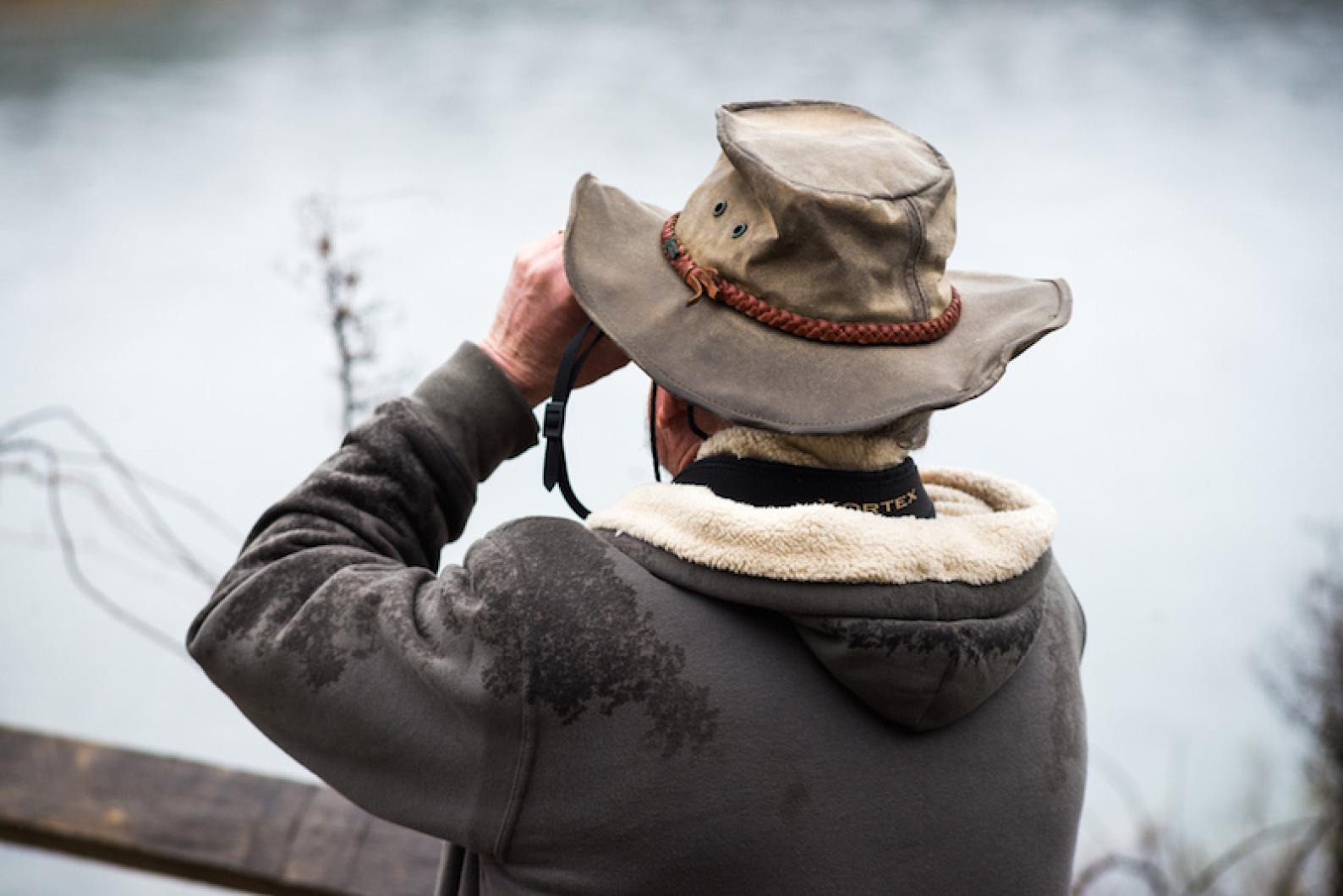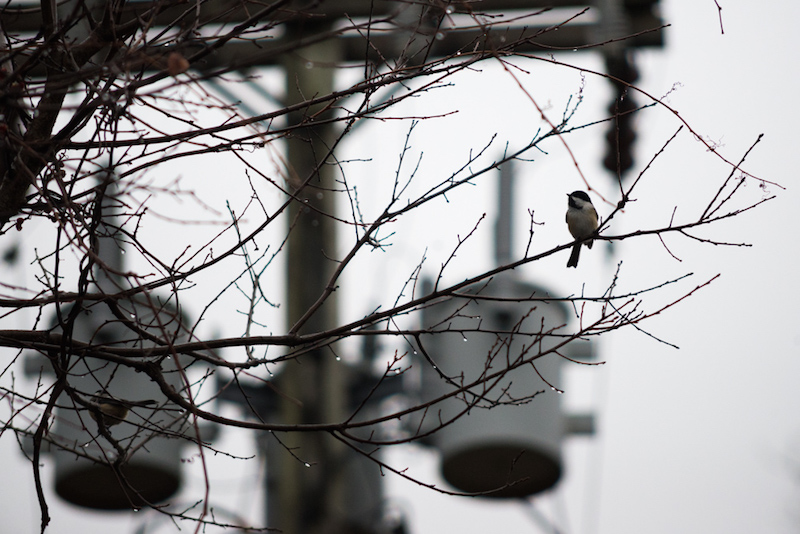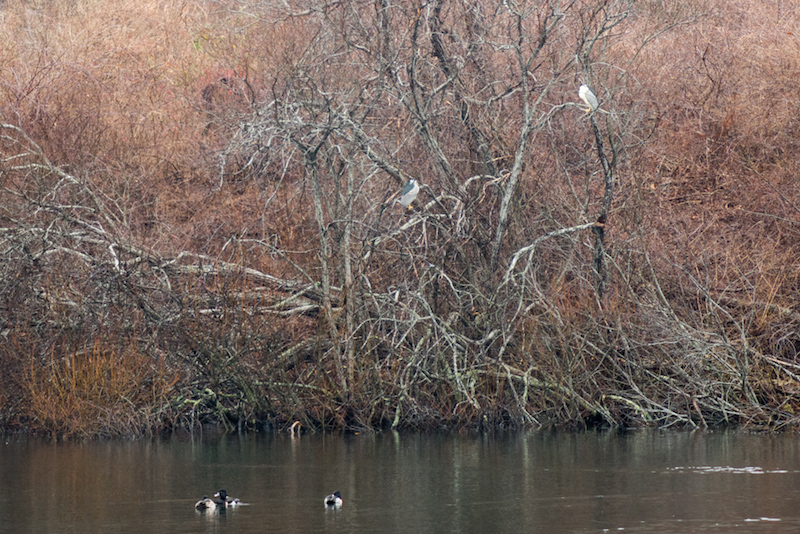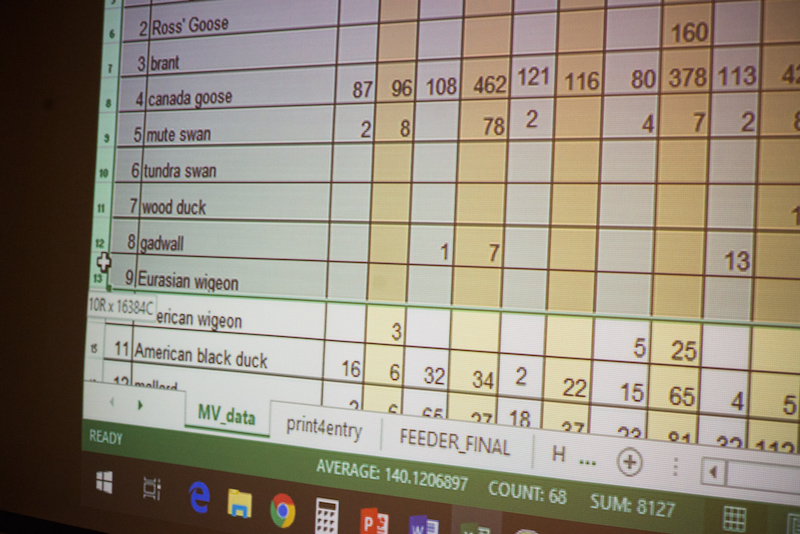On Saturday approximately 40 expert ornithologists, lifelong birders, devoted naturalists and one or two folks who had no trouble identifying a blue jay braved soggy conditions to partake in the 59th annual Christmas Bird Count on the Vineyard. In total, 16,026 birds were tallied (divided among more than 100 species) during the daylong affair.
The bird count tradition started in the late 19th century with hunters who wanted a reason to record the quantity of birds they shot. Over time, as the Audubon Society and the conservation movement gained influence, ornithologists co-opted the event, turning it into an international bird identification challenge and data collection opportunity. Those out on Saturday, while thoroughly devoted to the noble naturalist cause, also saw the Christmas count as more than a purely scientific expedition.
“It’s a social bonding experience,” said longtime birder Tom Chase. “We endure miserable weather together, going back to the same places every year to find the birds we’ve seen in the past. We’re hunters, too, in our own way. We just have scopes instead of guns.”
As birders across countries took to the woods, beaches, swamps, grasslands and ponds in both North and South America for the Christmas count, those on the Vineyard divided up into 13 teams to scour the varied ecosystems on their own Island.
“It’s very special and very rare to have this mix of habitats like the Vineyard,” said Chris Neill, a birder who came from Falmouth for the day. “You have coastal wetland, boreal forest, sandy grass plains — all in the span of about 10 square miles.”
On Saturday, Mr. Neill’s team was stationed in Oak Bluffs. The early birds wasted no time in the morning, splitting their forces between East Chop and Felix Neck at 6:45 a.m. They were happy they started early as there was more bird action within the first few hours of the morning than there was throughout the rest of the rainy day, as anything not called a duck hunkered down to avoid the deluge.
At about 7:10 a.m., with the sun rising but refusing to shine, Mr. Neill, Linda Deegan and team captain Luanne Johnson saw three golden-crowned kinglets, a tiny but hardy species of songbird. The kinglets, according to Mr. Neill, roost in tight holes to preserve heat, often sharing the space with other bird species like chickadees and nuthatches.
“It’s the same for humans socially on the Vineyard in the winter,” Ms. Johnson said. “You have to make new friends to stay warm.”
After counting hundreds of Canada geese and a similar number of ducks, a surprise awaited the trio as they entered the Felix Neck parking lot: a brown thrasher flew right out of an open thicket, no scope necessary. Ms. Johnson called it the highlight of her day.
“How do you find a unique bird?” Ms. Johnson joked. “Unique up on it.”
The group then paused for a late breakfast/early lunch before meeting up with the East Chop scopers — Tom Chase and Gus Ben David — near the Lagoon. The wet conditions made for tough counting for the rest of the day, with little luck coming on State Beach or in the wetlands of Farm Pond. Even with digital bird call recordings, and some fairly convincing human ones, the pickings were lean, and “target” birds hard to come by.
“It’s quiet, and the weather’s miserable,” Mr. Chase said. “But now that I’ve whined, I feel a little better.”
“There’s still nothing else I’d rather do,” Mr. Ben David said. “Near and dear friends of mine, doing what we love out here.”
All in all, the Oak Bluffs team counted 56 species, about four shy of what they consider a good year. At the Wakeman Center off Lambert’s Cove Road where everyone gathered at the end of the day, it became clear the numbers were slightly down across the board. Although a few of the other groups were more successful, with the Quansoo team finding 59 and the Edgartown team 72, Ms. Johnson and former compiler Rob Culbert noticed 10-year lows for peregrine falcons, red-throated loons and shorebirds more broadly. There was one species that saw an all-time high.
“Wild turkeys,” Mr. Culbert said.
The teams counted 297 wild turkeys.
Even with the relatively low count numbers, the day ended with a warm meal, good cheer and ample tales from the front. On Quansoo a snowy owl was spotted, and the Aquinnah team had a rare duck fly through their scope. And for the first time ever during the count, birders saw a barred owl and a common raven.
There was also discussion about the ecological importance of birds, outside of just identifying as many of them as possible.
“The most important thing about birds is that they eat insects,” Ms. Deegan said.
“I think the most important thing about birds is how happy they make us,” Ms. Johnson corrected.











Comments
Comment policy »